Why this review?
Normally I prefer to take and post photos and don’t bother too much about writing equipment reviews. Others do a much better job in that department. But I aquired this rather unique lens combination about 6 months ago. And since then it has become my favourite. I have used it for more than 50% of my photos in the last months, which says something. So I think this piece of equipment deserves some praise, that is why I want to share my experience here.
Some upfront remarks
I take mostly landscape and cityscape photos, monochrome. I use Sony full frame cameras, Sony A7R and now A7RII. And I prefer wide angle lenses. Very wide angle lenses. I have been using 10mm and 15mm lenses in the past quite often. Also, over the last two years or so I have become addicted to daylight long exposure photography with strong ND filters. I just love the effects.
Particularly for cityscape I use shift lenses. I like the vertical lines straight. And I prefer to have the lines as straight as possible in the camera, so the post-processing perspective corrections are kept to a minimum and I get the most out of the pixels.
Before I bought the Laowa the widest shift lens I was using was a 24mm lens. This is quite wide, but wasn’t wide enough for me. For a long time I was contemplating to get the famous Canon 17mm tilt-shift, but price for lens plus filter adapter always put me off. And the lens plus filter combination looks like a beast which is difficult to operate.
This is where I stumbled over the Laowa 12mm f/2.8 Zero-D plus Magic Shift Converter earlier this summer. This seemed to be too good to be true: wide, shift, ND filters easy to mount and rather affordable. I was hooked fast and got me the combination just in time for a trip to Norway. I have not regretted the purchase. It is indeed the thing I was looking for.
What is it?
First of all it is a 12mm very wide angle rectilinear lens. At the time of purchase it was available for Nikon and Canon mounts, but I saw Laowa has added some more options since. With a standard Nikon/Canon to Sony lens adapter it fits onto my Sony A7R. It is an all-manual lens, no autofocus, no Exif data. I use autofocus hardly anyway, so this is no issue for me. And such a wide lens has lots of depth-of-field from f/11 upward, so focusing is easily done using the focus scale. I hardly use the viewfinder to focus with these kind of lenses. It looks and feels very solid and well built.
Next thing is the so-called Magic Shift Converter. You have to buy it separately as an accessory. This is a really unique piece of equipment. It works like other shift lens adapters, but has additional optical elements which convert the 12mm lens into a 17mm shift lens, with +/- 10mm shift. The shifting mechanism is a bit unusual, not operated via a knob like most other shift lenses but via a ring that works like an aperture ring. There is also a locking mechanism (a screw) to lock the shift position. It should be used every time, since the lens is heavy and may slide down easily. And it also rotates, so you can shift up/down or sideways, both in landscape and portrait mode. Also, there is an additional aperture ring on the adapter, with an uncommon numerical scale from 1 to 8. I haven’t really figured out what it should be used for, but I found it very practical with ND filters – easy to fully open and close the aperture for a quick check. Lots of features in such a small adapter.
And then there is a specially made filter adapter for 100mm standard filters, also available as an accessory. There is no filter thread on the lens, so filters must be mounted with this adapter. There are two versions of this – I use the so-called “Lite” version. It is easy to mount with a little screw, and it can be fully rotated for maximum flexibility.
And this is what the whole combo looks like:
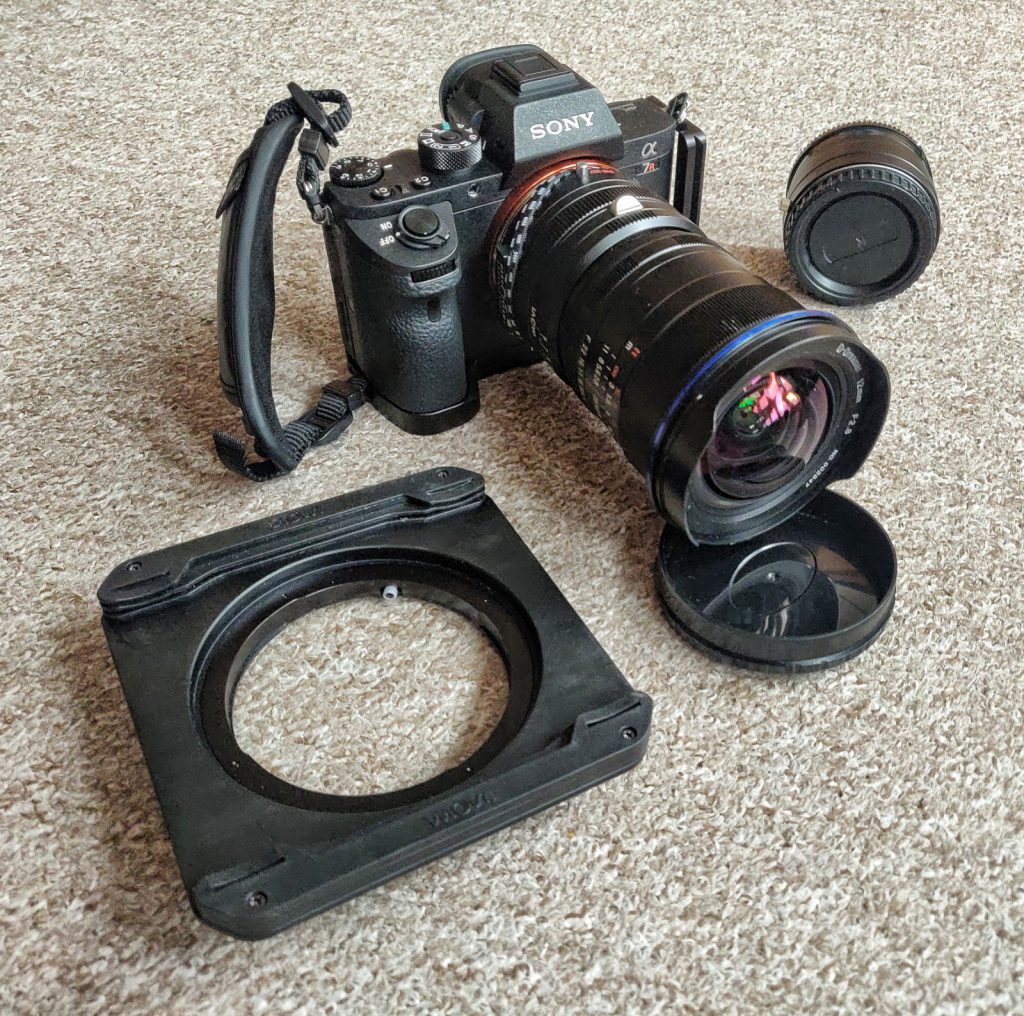
This is how it looks when disassembled:
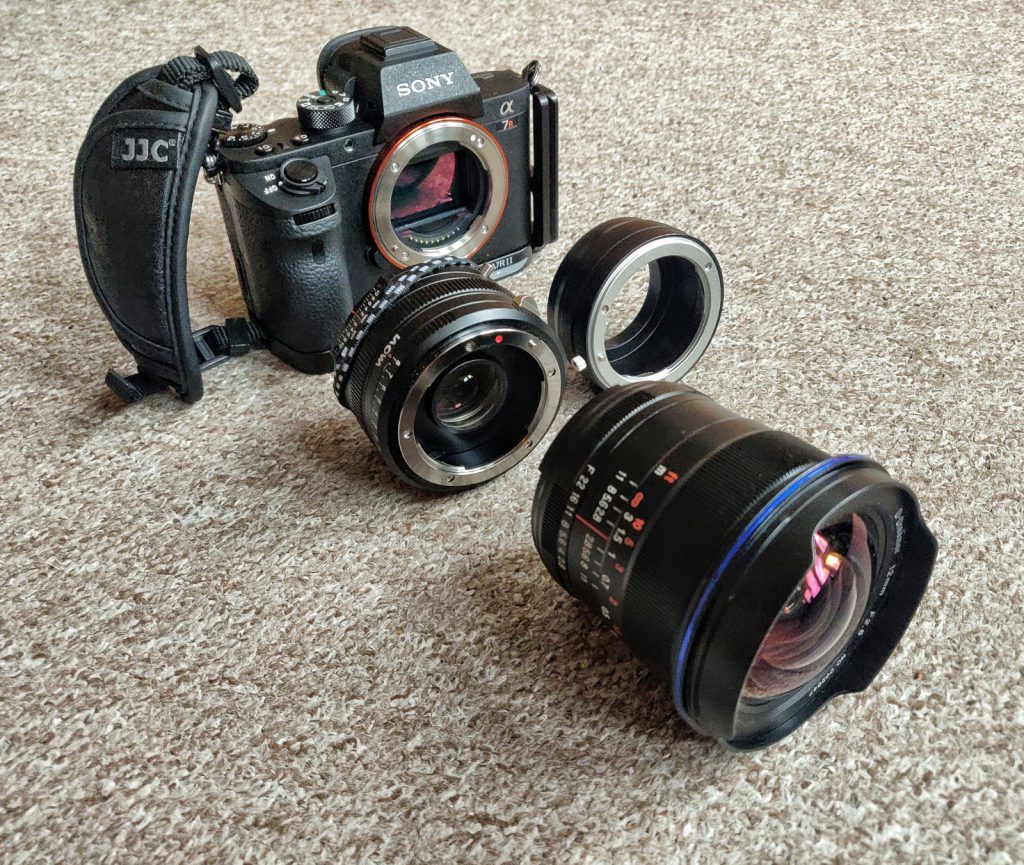
Typical field setup with filter holder mounted:
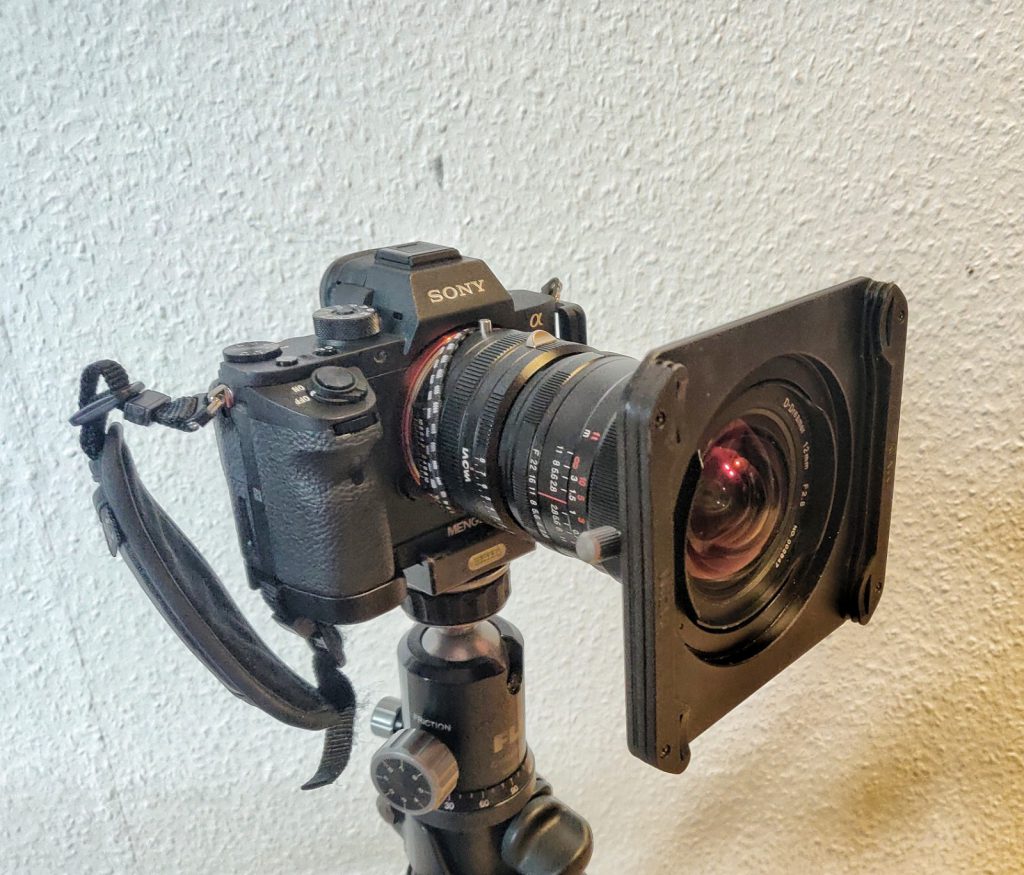
And the same field setup with a Haida 1000x ND filter
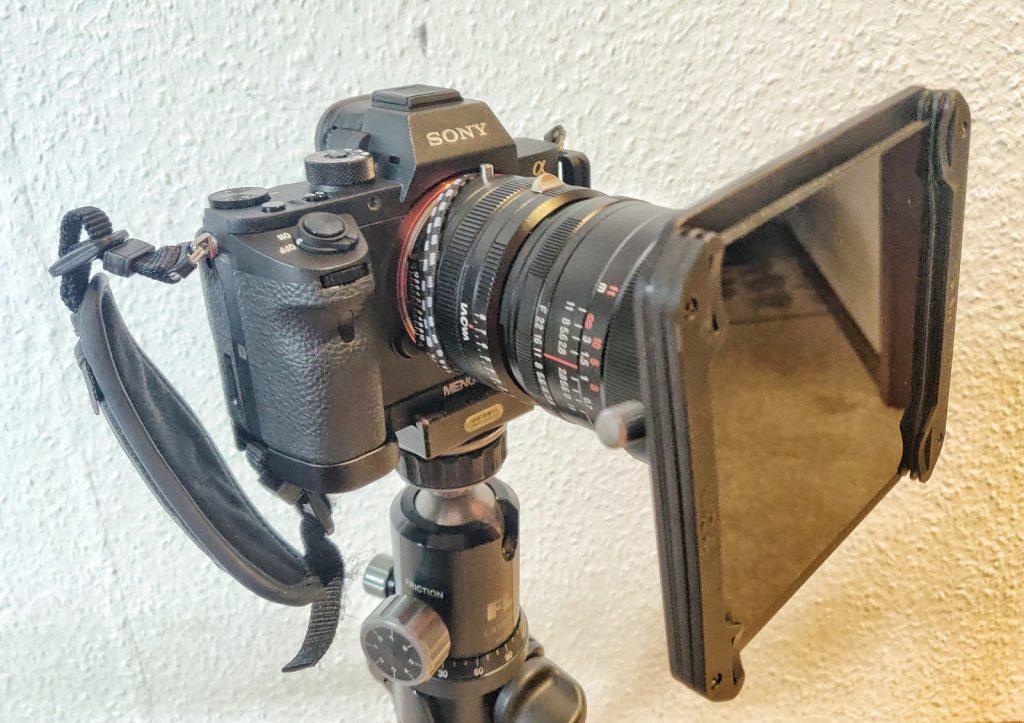
This is the shift mechanism, seen from the side. Maximum shift up, neutral, maximum shift down. The little screw in the middle is the shift locking mechanism. Shift is operated by turning the aperture-like ring left of the locking screw.
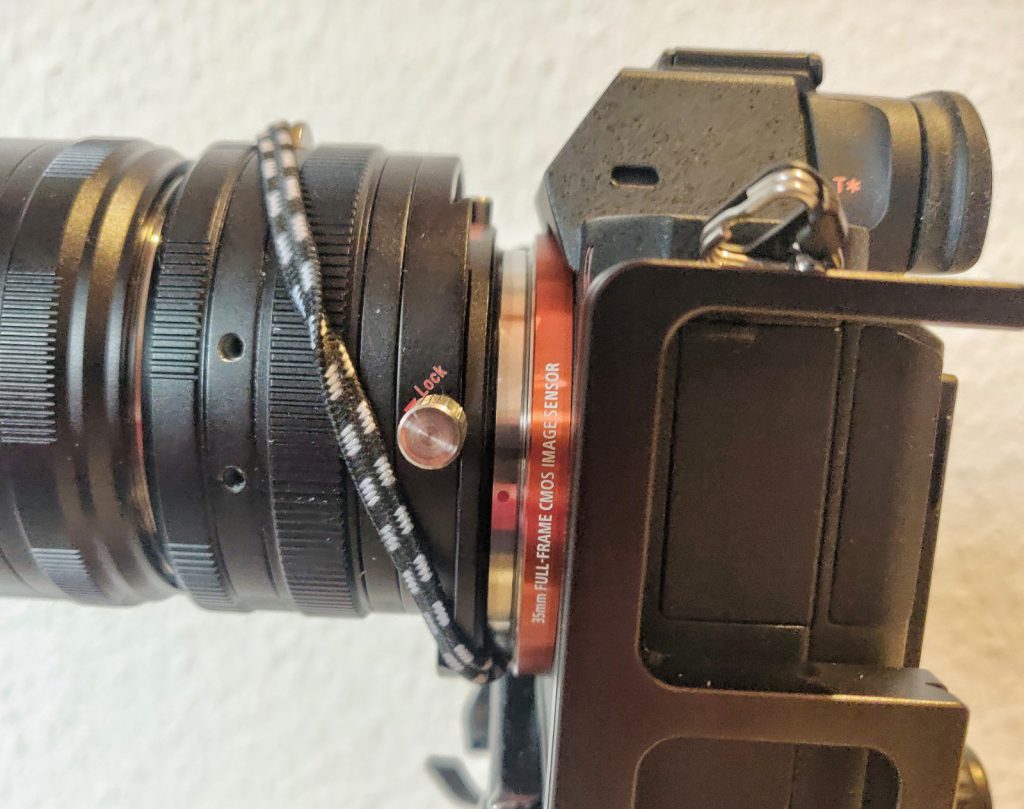
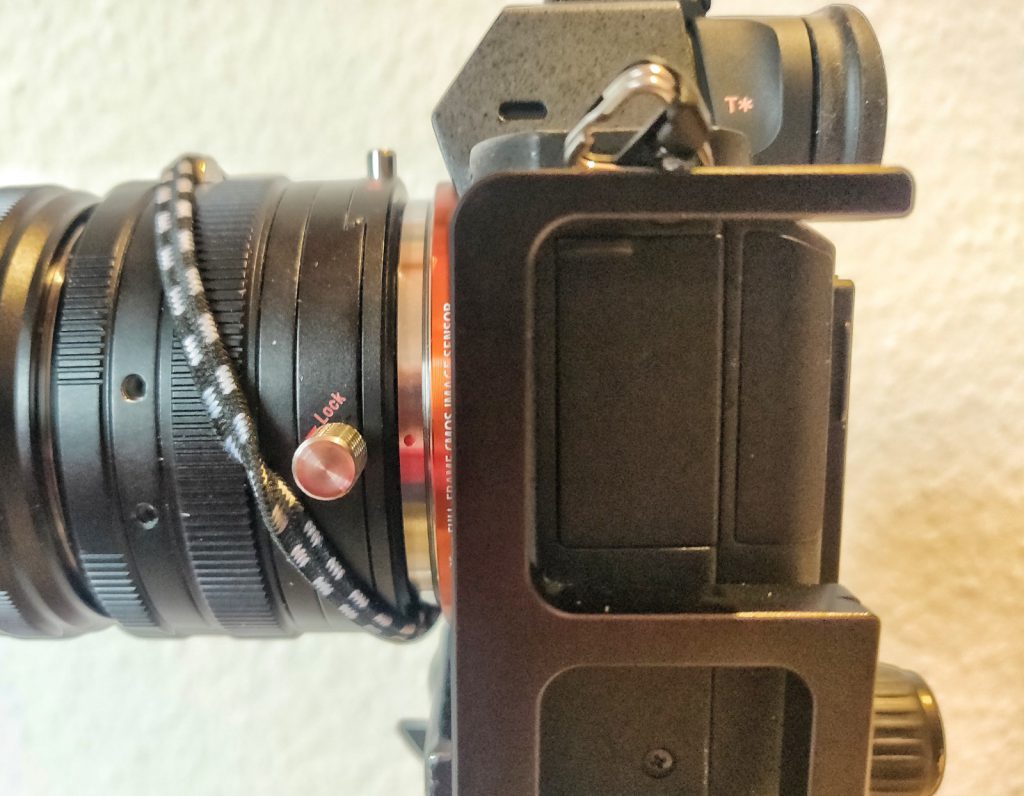
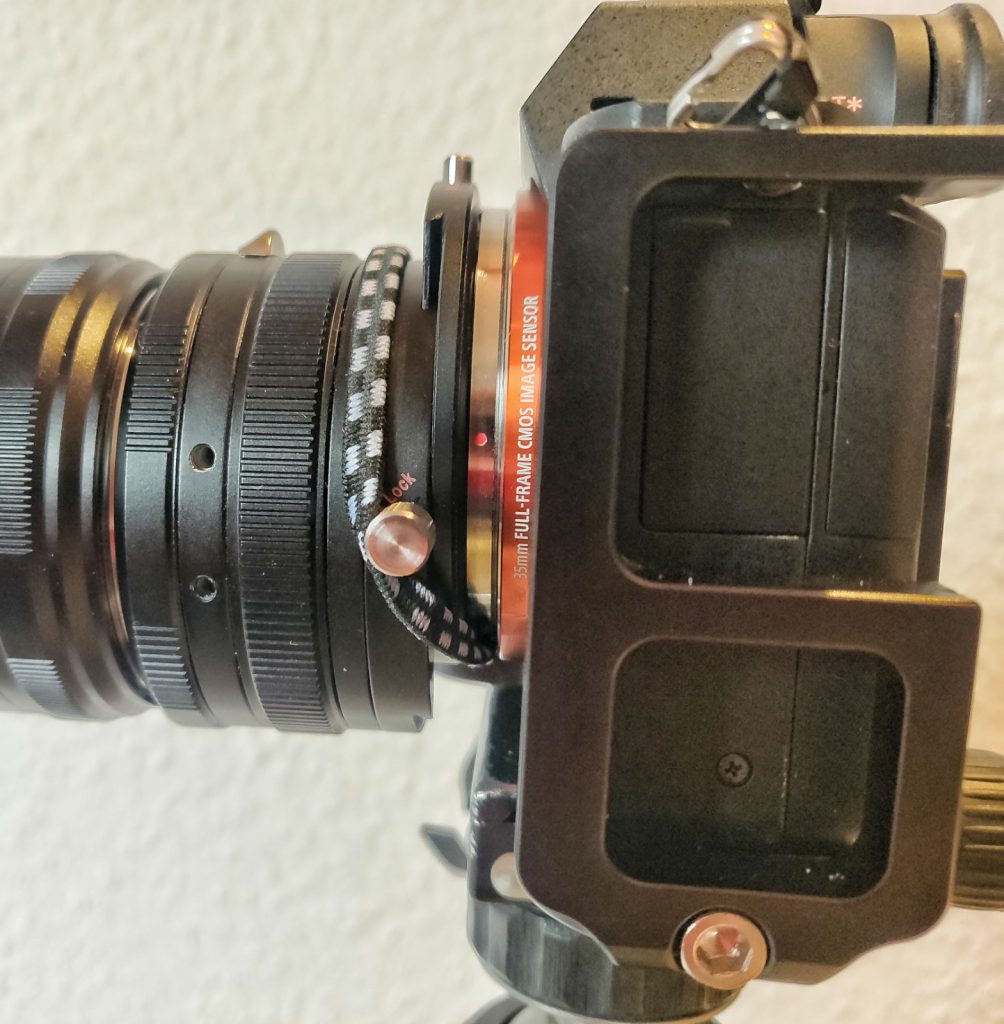
If you wonder about the ribbon: it is there to block a light leak on my older Sony A7R. Seems to be a common Sony A7 series issue: when using heavy lenses (and this one is rather heavy) light leaks develop on the lens mount. Not related to this particular lens.
Sample Images – Landscape
This is not a thorough technical review of the Laowa 12mm (actually I should say 17mm). You will find these easily on other sites. But I would like to share some sample images and my impressions.
Overall, I am very happy with the image quality of this lens/converter combination. Laowa is a rather new player in the lens market but their lens designers know their trade. Images have good contrast and are sharp across the field, even on the high res Sony A7RII sensors. I mostly shoot with f/11 or f/16. Sharpness decreases somewhat at f/22, to be expected. I shoot almost exclusively monochrome, so I cannot say too much about true color rendition, CA and other such color things. And most of the images have been made with the Magic Shift Converter in place. So all is about a 17mm wide angle shift lens.
First image from a trip to Norway. Wideangle fjord scenery at low angle, with little shift applied, long exposure with ND filter. Things are very sharp from up close to infinity. This is why I love wide angle lenses and long exposure.

Same fjord, different angle. And without ND filter. The clouds and the seaweed make for a nice wide angle perspective. And every detail sharp from here to infinity
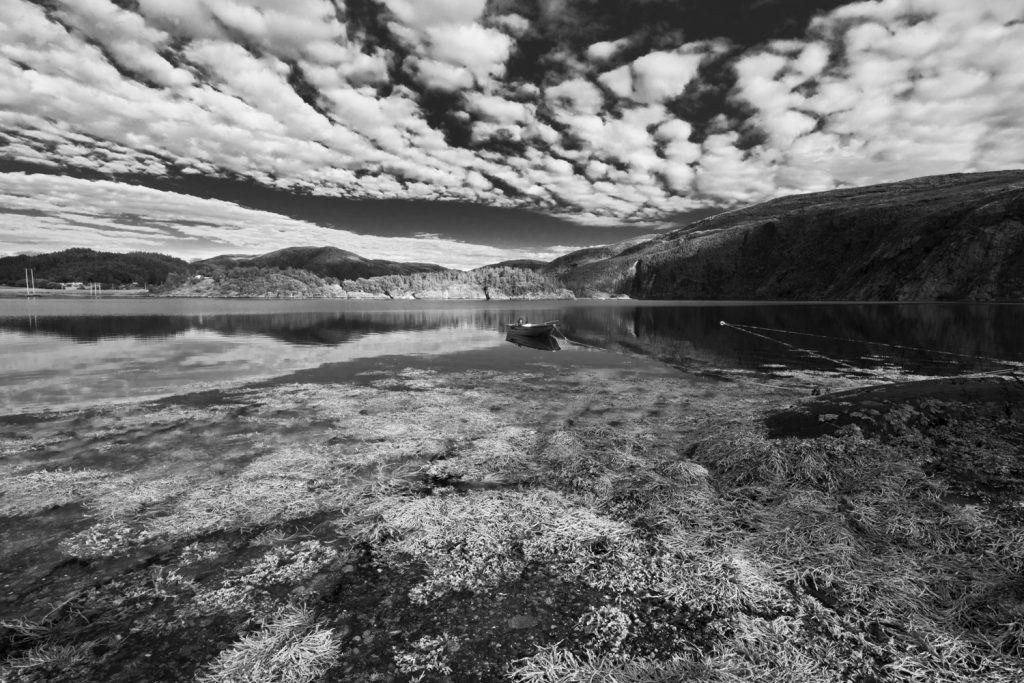
Autumn shot in the park. Low angle perspective, shift applied to correct perspective. Again with ND filter. High contrasts between the snow-white building and the dark shadows on the right.
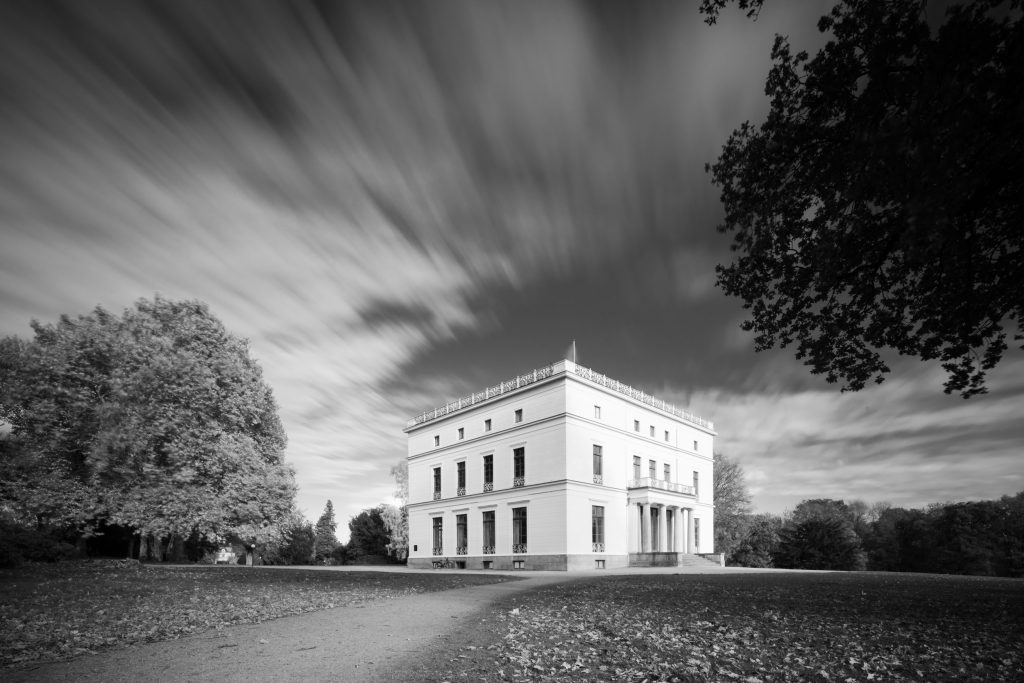
Trees in the park. Shot against the sun with ND filter and quite a bit of shift. Shots against the sunlight can be a bit challenging with this lens, flare is quite significant. And contrast can be too much for a good fong exposure picture. Here the flare effect is moderated by the light clouds and the trees
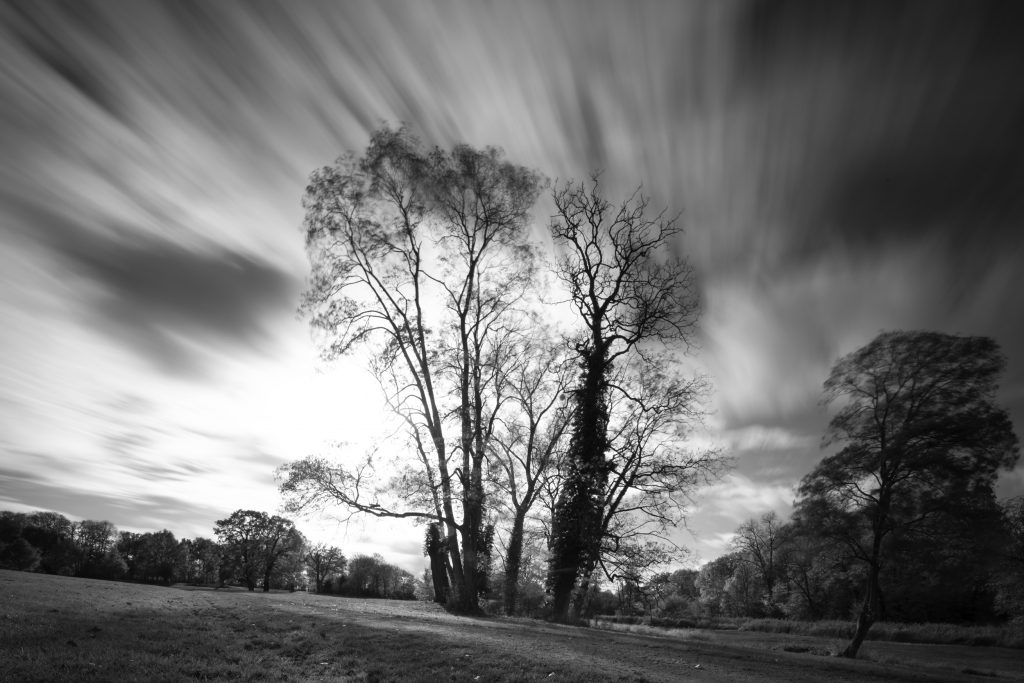
Sample Images – Architecture and Cityscape
This is what a shift lens is all about: perspective correction. And I find the Laowa / Magic Shift Converter does a really good job. But see for yourself.
Speicherstadt Canal. Some shift applied. All lines are straight, and there is no noticeable barrel distortion. Really good when you shoot a close quarters.
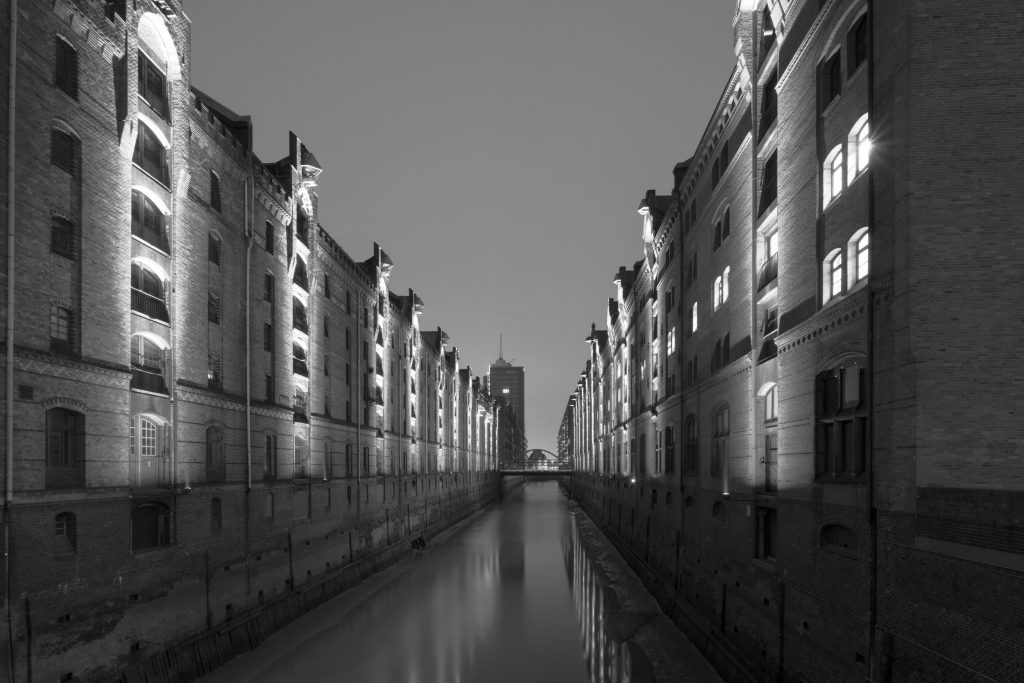
Hamburg Speicherstadt on an early morning. A really wide angle. Lots of shift applied.

Same subject, but taken at very low angle – from the gutter, that is – and from a bit closer to the building. Maximum shift. Not many lenses could do that.
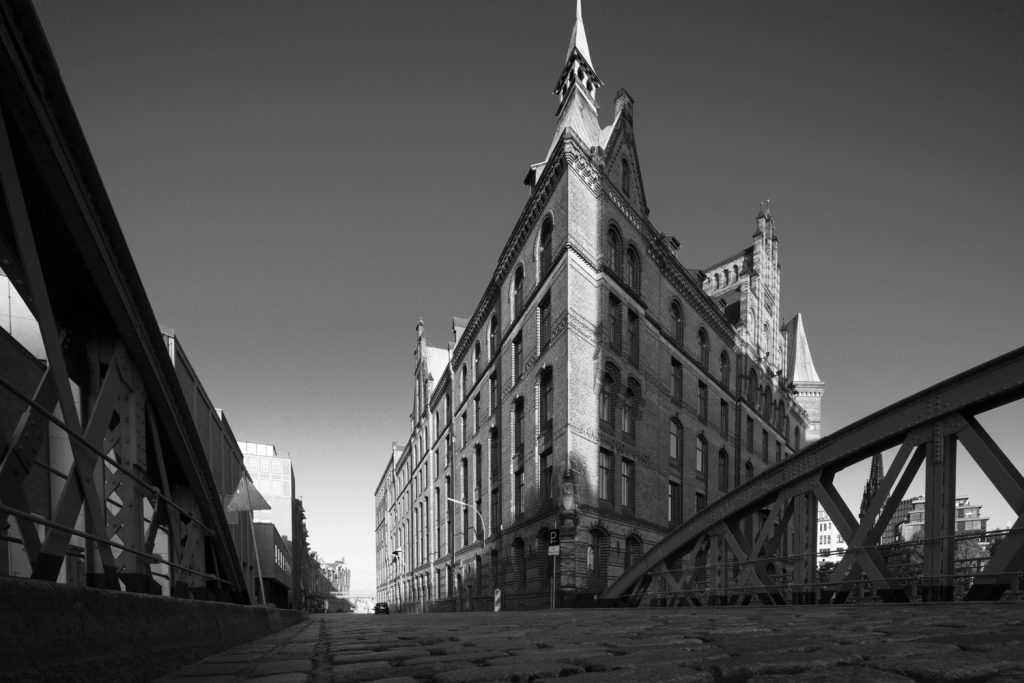
Trondheim Cathedral, portrait mode and handheld. Lots of shift. It takes a bit of practice to operate the shift mechanism and to hold the camera exactly level at the same time when handheld. But it can be done. In portrait mode there is some vignetting at maximum shift, as with other shift lenses.
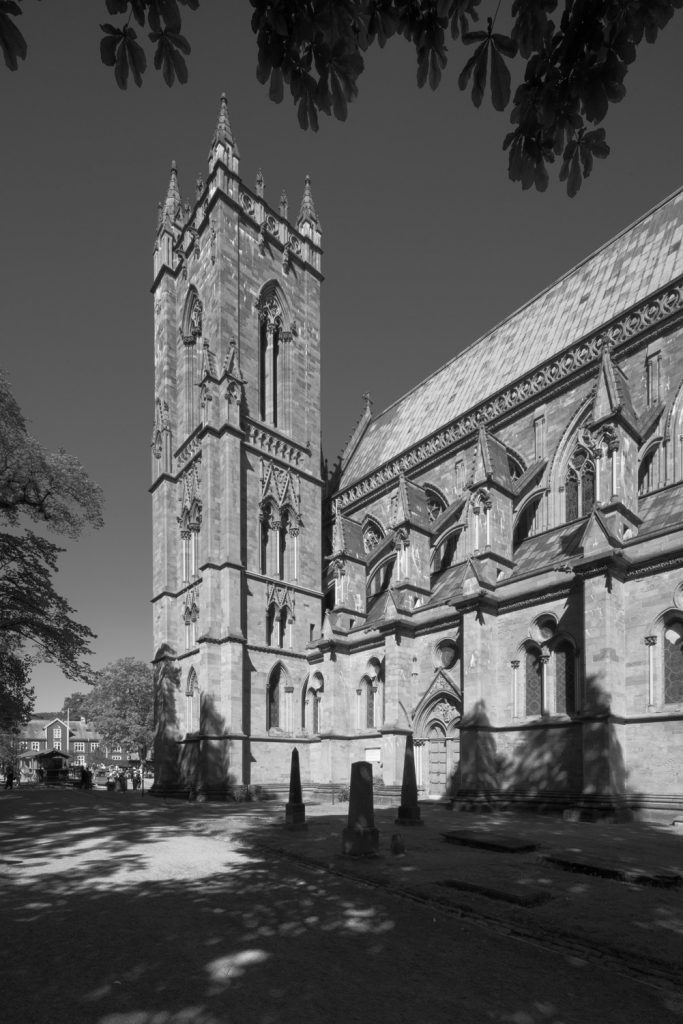
This one was taken without the Magic Shift Adapter. Even 17mm wasn’t wide enough, so I switched to a normal lens adapter and used it as a true 12mm lens. Long exposure with ND filter, no perspective correction of course.

Final Picture: Kesselhaus in the Speicherstadt. This is why I love wide angle shift lenses. Interesting perspective which combines close-up subjects (the bridge) with the distant chimneys, yet all vertical lines are straight. Again with the Magic Shift Converter, Long exposure at dark, quite a bit of shift.
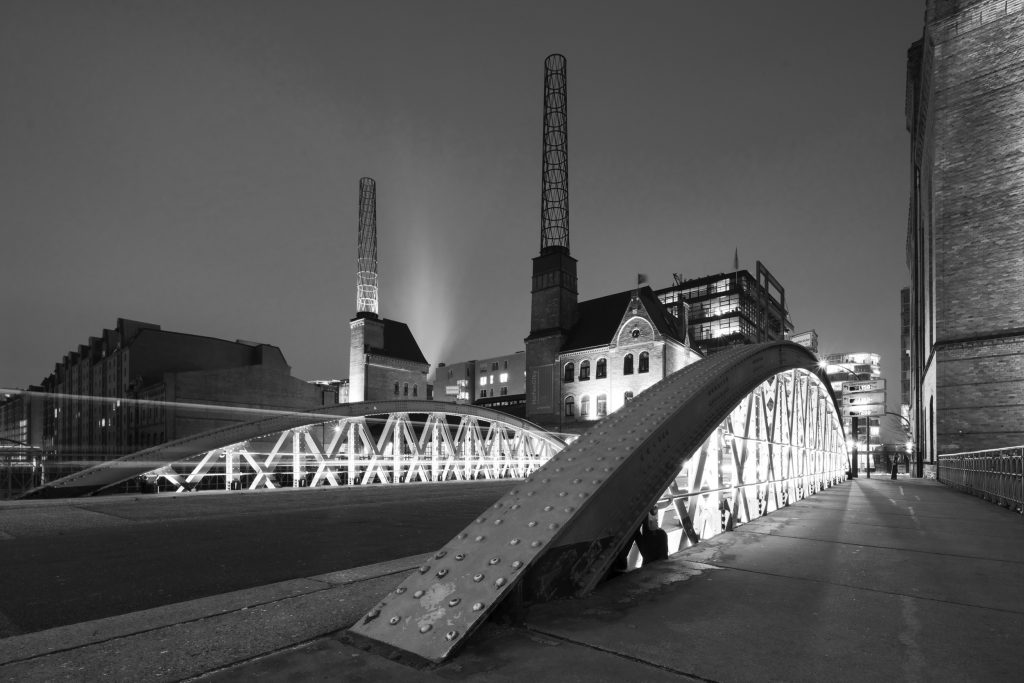
Summary – and some observations
As you probably noticed, I have fallen in love with this lens. Well, actually with the lens – shift adapter – lens holder combination. I don’t think I have ever used a lens so often – and sometimes almost exclusively – on my photo walks. Well done, Laowa. You have eliminated an important gap in my lens bag.
Some additional observations I would like to share:
Build quality: I already mentioned that the lens looks solid and well built. This is not just the look. It is indeed solid and robust. My copy has survived already a bad crash when I slipped on a wet stone on the shore. Just a few cosmetic scratches, but the lens still works.
Filter holder: if you use strong ND filters like an ND 1000x you should definitely use foam-sealed filters. Otherwise there will be large light leak effects which will ruin the picture. I believe you need the Lite filter holder version for foam filters.
Tripod mount: the Magic Shift Converter comes with an optional tripod mount. This is a good idea, since the lens/converter combination is heavy. But it is not well executed. It is mounted at an odd angle which makes it almost impossible to use it with up/down shift. So I removed it quickly.
No tilt: It is a shift lens (well, actually adapter) only. For me this is no issue. Shift is what I want, and this is what I get. I don’t use tilt for my shots.
12mm vs. 17mm optical quality: It seems a bit odd but the optical quality of the lens actually seems to improve WITH the adapter. This is a purely subjective thing, but the images taken at 17mm somehow look nicer than the images taken at 12mm. I read a more technical review which seems to confirm this.
Comparison with other lenses
The obvious competitor would be the Canon 17mm tilt/shift. I have never used this lens, so I can’t really make a comparison, except for the price. The Laowa is less expensive (but not exactly cheap either).
I can make a comparison, however, with two other extreme wide angle lenses in my bag: the Voigtlander Super Wide 15mm and the Voigtlander 10mm Hyper Wide. Both are excellent lenses, especially the newest versions designed for the Sony E mount. They have been in my bag always. But I have to admit that ever since I acquired the new Laowa they both have been rather idle. Somehow the Laowa is replacing those two lenses for my purposes. It is difficult to say why exactly.
- The Laowa 12mm (17mm shift) has that shift option which was somehow missing with the Voigtlanders. It just seems to fill in a need that I have in my photographic style. Particularly for cityscape / Architecture.
- Optically, the Laowa 17mm and the Voigtlander 15mm are on the same level. For landscape subjects there is little difference. 15mm is a bit more angle but that is compensated by the shifting capability at 17mm. Many of the landscape pictures I take could be taken with either lens.
- I find the Voigtlander 10mm optically superior to the 12 mm Laowa. But it is a lot wider. 2mm make a real big difference in that focal range. And most often 10mm is too wide. There are some selected subjects where the 10mm gives the additional kick, but they are rare.
- There are some advantage with the Voigtlanders. They are electronically coupled to the Sony cameras so you get Exif data. For me this is not important. And they are much smaller and lighter, especially when compared with the lens/shift adapter combo. So if size and weight in the bag is an issue, this may be a decisive factor.
Disclaimer
This review reflects my own, personal, independent opinion. Anybody may disagree. I do not get any endorsement for writing it, and I bought the equipment with my own money.
Hi there! Thank-you for this article 🙂 I’ve been looking or a similar set up and I have a couple of questions or you? I can’t afford the 12mm lens it is somewhat out of my budget however I’ve been thinking of getting the Zeiss Distagon 18mm f3.5 ZE.2 and mounting it on the magic shift adaptor? Will that work? How much light loss have you experienced with the adaptor? What do you think about my idea? Am I being silly lol. Thanks or your Time
Sorry for the really late reply, but I didn’t notice there was a post waiting until now. But maybe the answer is still helpful. In fact I have been using the Laowa Magic Shift Adaptor with other lenses, with good results. I use the Nikon version of the Magic Shift Adaptor, so Nikon F Mount lenses should generally work. Lenses that I have tried are an old manual Nikon 20mm 3.5, a Nikon 17-35 zoom lens, a Tokina 17mm and an Opteka 15mm (cheap but very good). Image quality with all these lenses was very good on a 42 MP Sony A7R II and even on the 61 MP Sony A7R IV, except for the Tokina. But the Tokina 17mm is not that sharp even without the adaptor. I use the Nikon 20mm quite often, in fact. I do not notice any light fallof, and since I do mostly long exposure photography a light loss can be actually helpful. What you have to keep in mind with the magic shift adaptor is the crop / enlargement factor of about 1.4. The Laowa 12mm will be a 17mm shift lens, the Nikon 20mm a 28mm shift lens and so on.